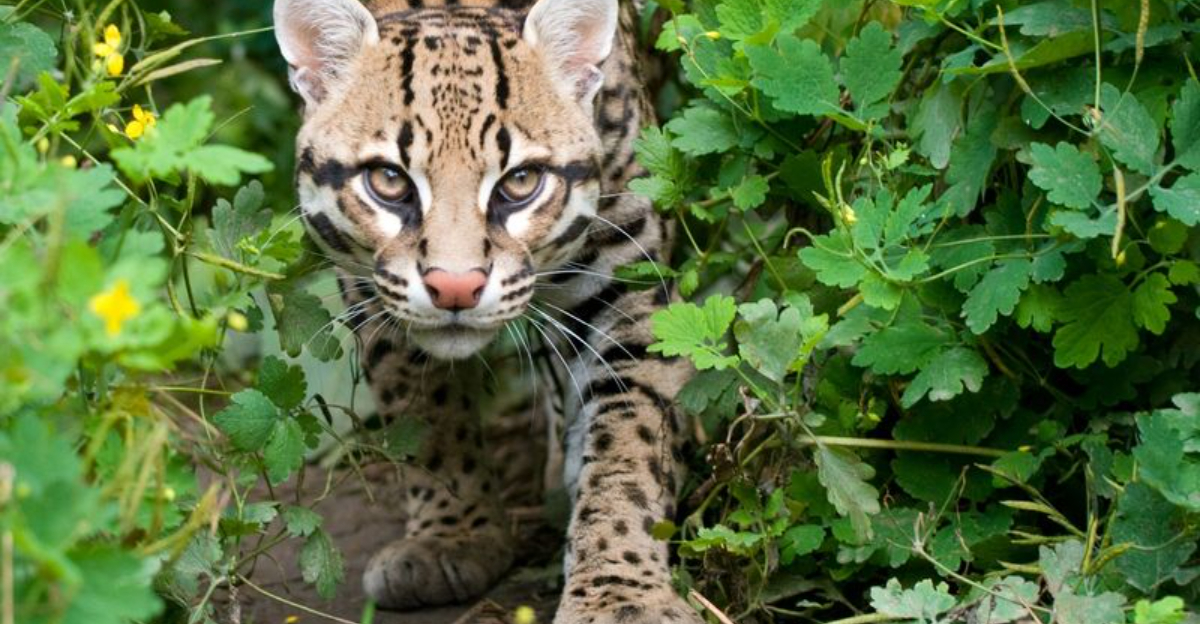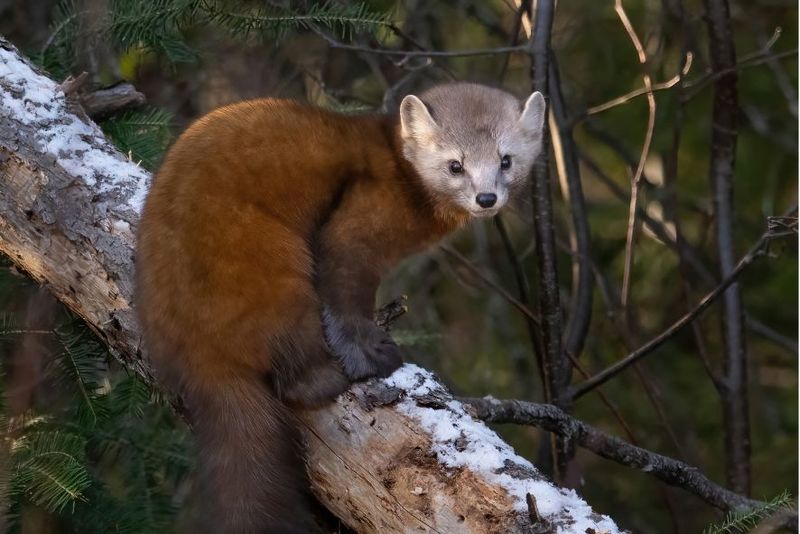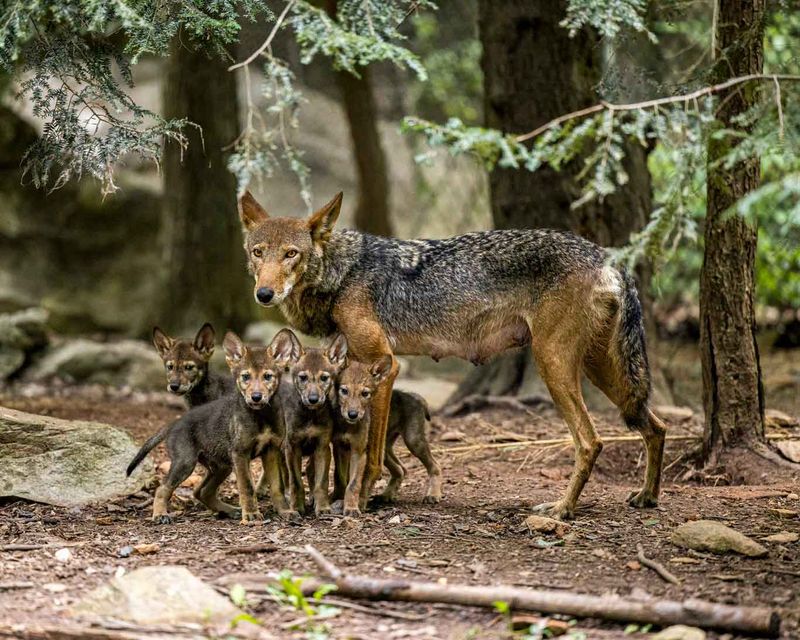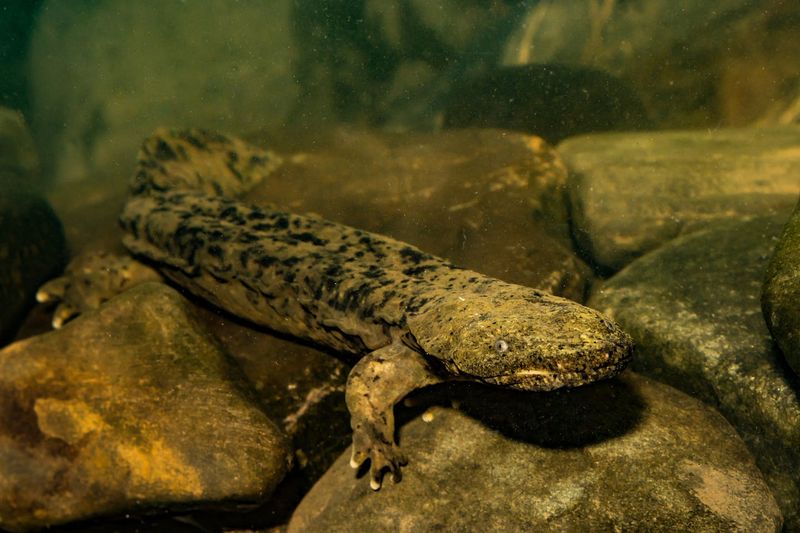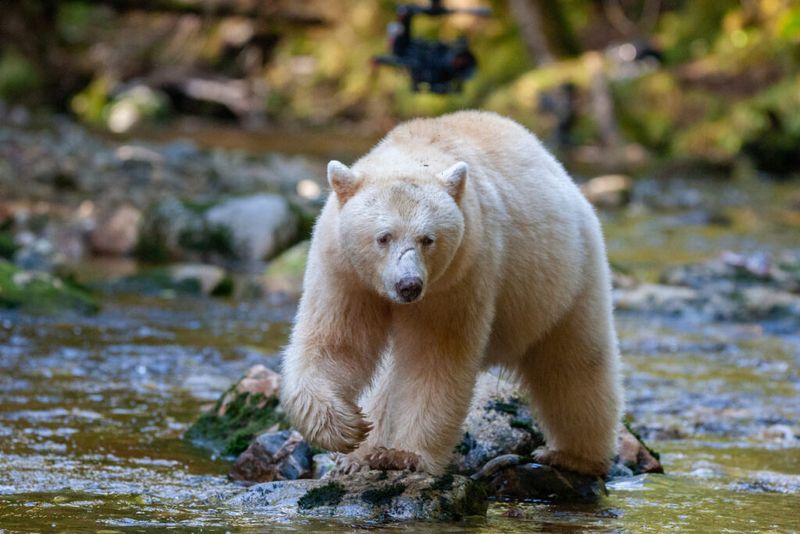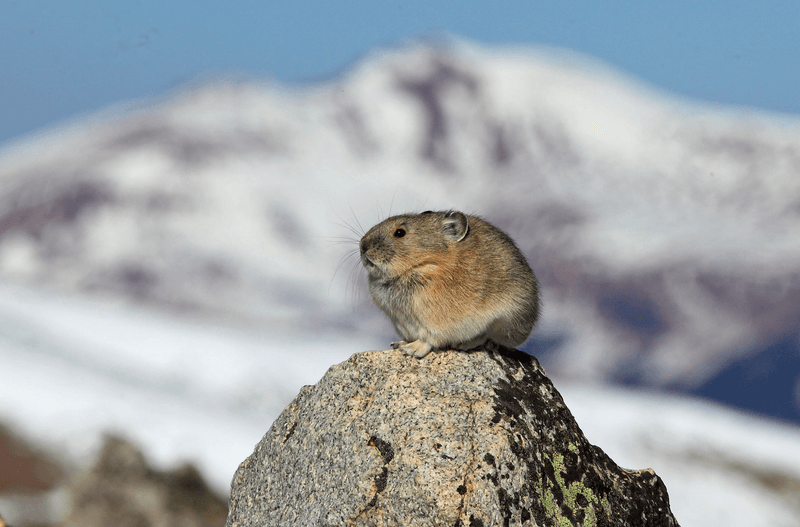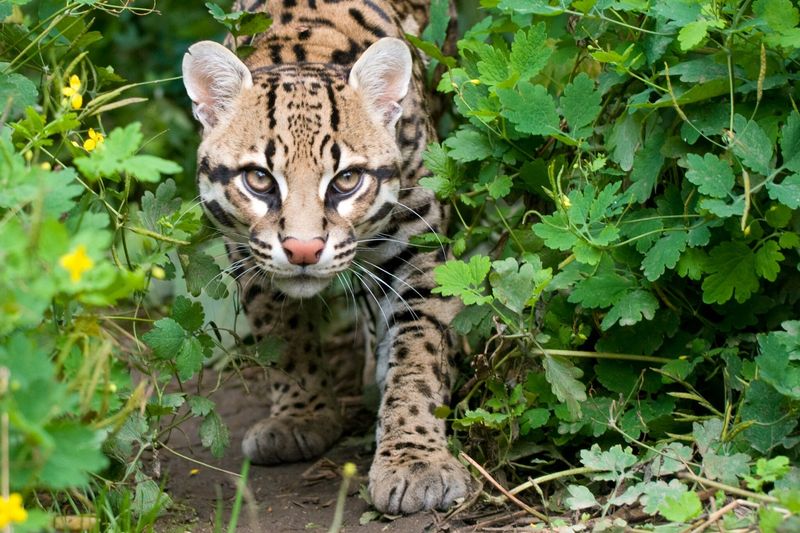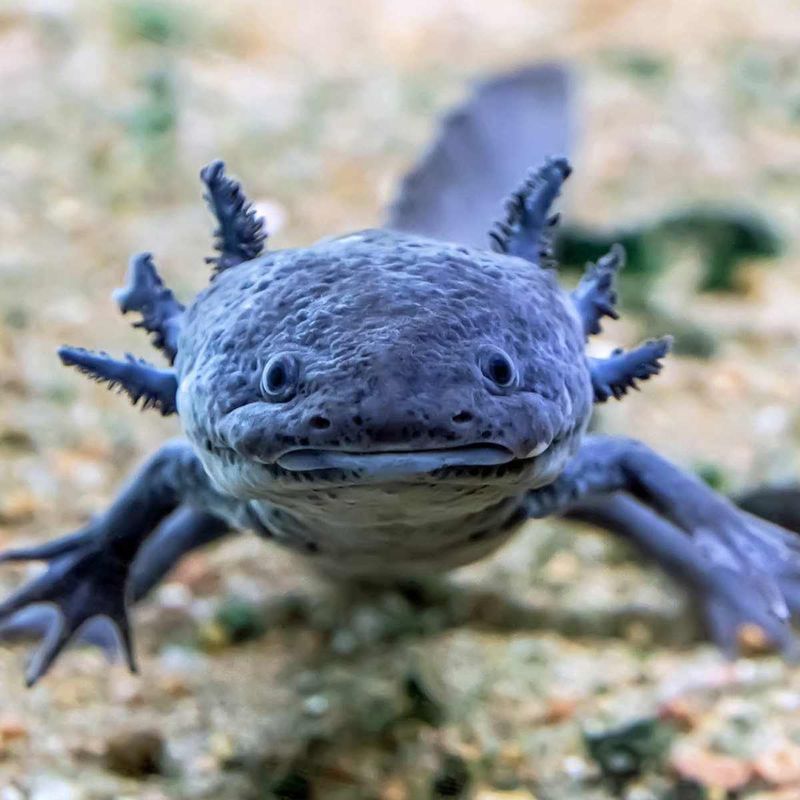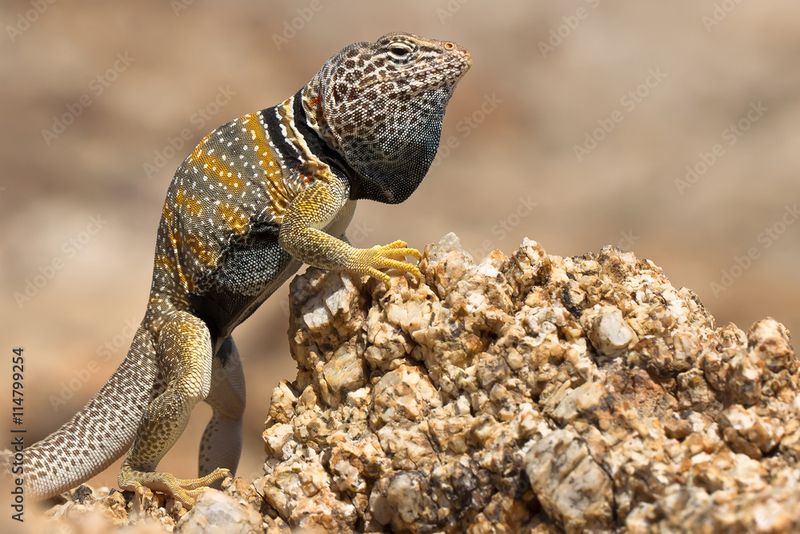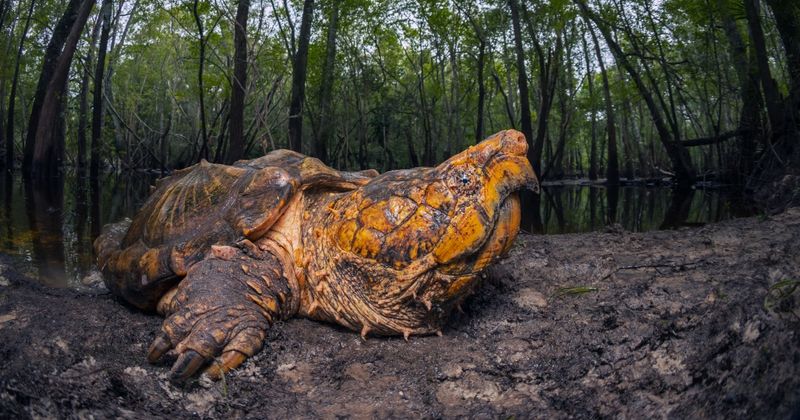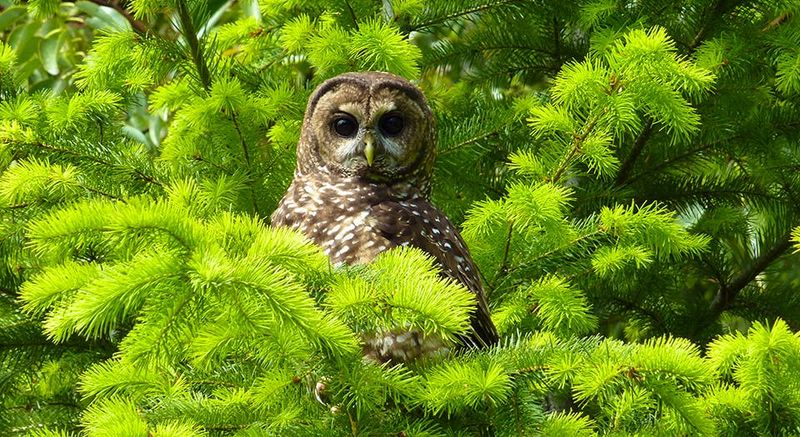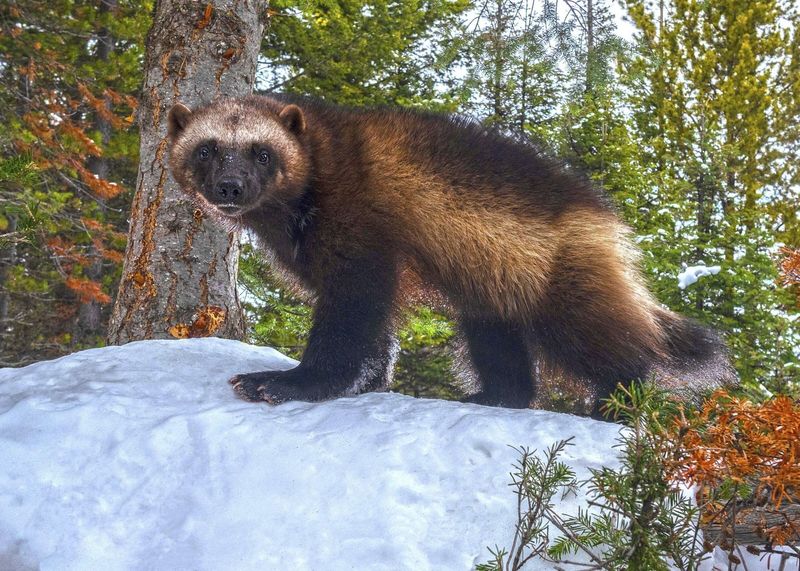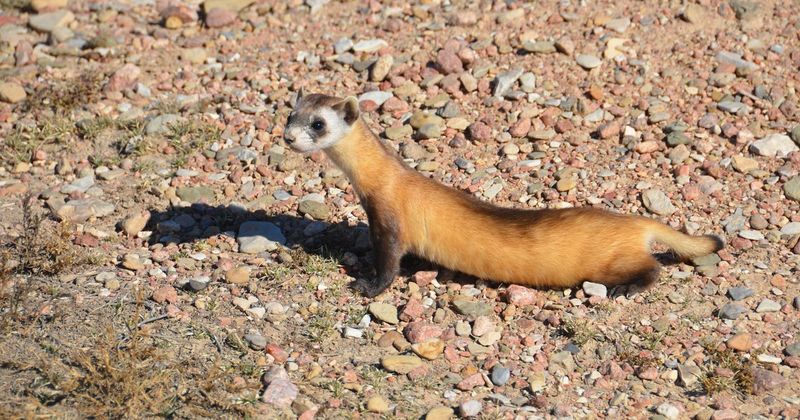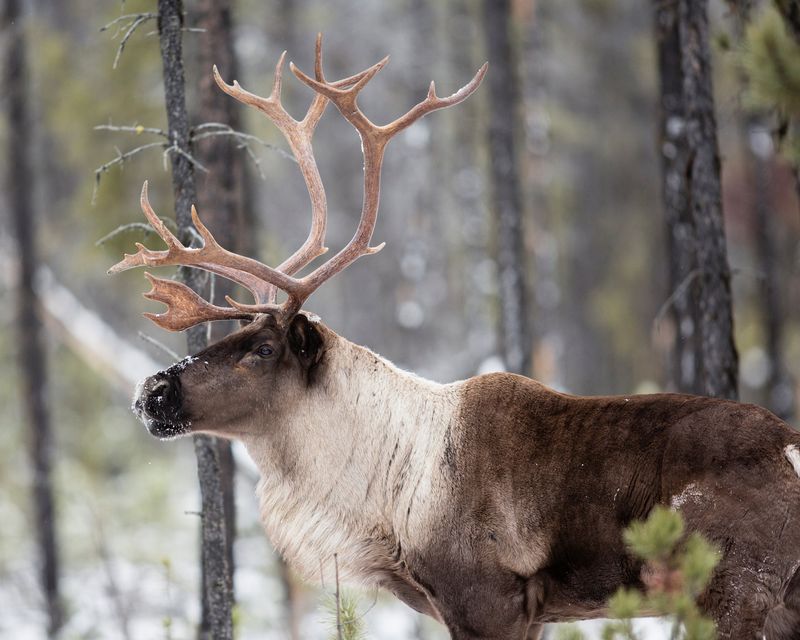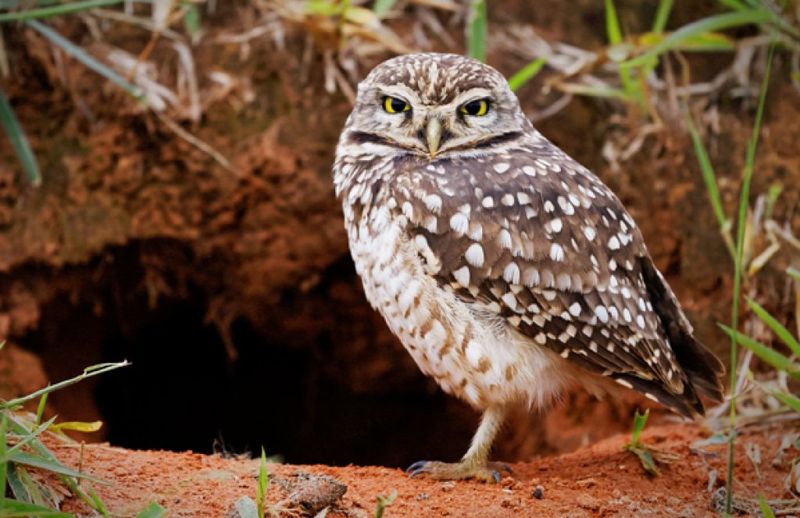📖 Table of Content:
- 1. American Marten
- 2. Gila Monster
- 3. Red Wolf
- 4. California Condor
- 5. Eastern Hellbender
- 6. Kermode Bear
- 7. Pika
- 8. Vaquita
- 9. Ocelot
- 10. Axolotl
- 11. Great Basin Collared Lizard
- 12. Alligator Snapping Turtle
- 13. Spotted Owl
- 14. Wolverine
- 15. Black-footed Ferret
- 16. Mountain Caribou
- 17. Burrowing Owl
- 18. Pacific Fisher
- 19. Marbled Murrelet
- 20. Eastern Indigo Snake
North America boasts a stunning array of rare wildlife, each species uniquely contributing to its ecosystem. From the dense forests to the arid deserts, these creatures are masters of their environments. Conservation efforts are vital to protect these remarkable animals and their habitats.
1. American Marten
With a sleek coat and lively demeanor, the American Marten is a sight to behold. These agile creatures thrive amid the lush northern forests, where they skillfully hunt nocturnal prey. Often seen leaping from branch to branch, their presence signals a thriving ecosystem. As connoisseurs of both small mammals and berries, Martens play a critical role in maintaining ecological balance. Did you know their fur was once highly prized, leading to overhunting? Thankfully, conservation efforts now protect them, allowing these beautiful animals to grace the wilderness once more.
2. Gila Monster
The Gila Monster, with its brilliant hues and venomous bite, is a desert dweller unlike any other. Native to the southwestern United States, these reptiles spend much of their time hidden underground. Their slow, deliberate movements reflect a life adapted to arid environments, where they feast on eggs and small animals. Fascinatingly, their venom has been studied for medical purposes, offering insights into treatments for diabetes. As one of the few venomous lizards, the Gila Monster is both feared and revered in its native habitat.
3. Red Wolf
The Red Wolf’s haunting howl once echoed across vast territories but now whispers through limited landscapes in North Carolina. Critically endangered, these wolves represent a profound conservation success story. Known for their striking reddish coats, they play a vital role in controlling prey populations, ensuring the health of their ecosystem. Despite past close calls with extinction, reintroduction programs have offered them a second chance. These wolves carry the legacy of resilience, embodying the spirit of survival against all odds.
4. California Condor
Once nearly vanished from the wild, the California Condor’s comeback is a beacon of hope. With a wingspan that can eclipse the sky, they are the largest flying birds in North America. Soaring high above the rugged terrains, these scavengers cleanse the environment by feeding on carrion. Despite their formidable presence, they are fragile, with survival hinging on human intervention. Intensive conservation efforts have pulled them back from the brink, yet they remain a symbol of the delicate balance between nature and humanity.
5. Eastern Hellbender
In the crystal-clear streams of North America lives a creature reminiscent of ancient times—the Eastern Hellbender. This substantial salamander, often referred to as a ‘snot otter,’ thrives in pristine waterways. As indicators of water quality, their presence—or absence—tells a story of environmental health. These creatures, slow to mature and sensitive to pollution, face threats from habitat destruction. Their unique morphology and ecological role make them fascinating subjects of study, with conservation efforts crucial to their survival.
6. Kermode Bear
With its ghostly white fur, the Kermode Bear, also known as the Spirit Bear, is a rare gem of the British Columbia forests. These bears are not albinos but a rare morph of the black bear, revered by indigenous cultures and conservationists alike. Their existence highlights the diversity within species and the mysterious ways of evolution. They primarily feed on salmon and berries, contributing to forest regeneration. The Spirit Bear’s allure lies in its rarity and the spiritual significance bestowed upon it by native peoples.
7. Pika
Among the rocky landscapes, the Pika’s cheerful calls add to nature’s melody. These small, herbivorous mammals inhabit mountainous regions, where they gather haypiles to survive harsh winters. Despite their diminutive size, they are vocal defenders of their territory. Climate change, however, threatens their high-altitude habitats, making them a focus of ecological studies. Often called ‘rock rabbits,’ their relentless energy and ecological niche as alpine harvesters tell a tale of resilience and adaptation.
8. Vaquita
The Vaquita, with its endearing facial markings and shy nature, embodies the fragility of marine life. Found exclusively in the Gulf of California, this porpoise is on the brink of extinction due to illegal fishing practices. Their small population makes each sighting precious and urgent. Conservation efforts are racing against time to prevent their disappearance. Known as ‘the panda of the sea,’ the Vaquita’s plight serves as a poignant reminder of the impacts of human activities on ocean biodiversity.
9. Ocelot
In the heart of the dense South Texas jungle, the Ocelot prowls with unmatched stealth. This medium-sized cat, with intricate patterns adorning its coat, is an emblem of feline grace. Once widespread, urbanization and habitat fragmentation threaten its existence. Ocelots play a pivotal role in controlling rodent populations, ensuring ecological balance. Their elusive nature and stunning appearance make them a sought-after sight for wildlife enthusiasts. Through conservation initiatives, there is hope to preserve their habitats and secure their future.
10. Axolotl
Known for its perpetual smile and regenerative powers, is a marvel of nature. Native to the waterways of Mexico, these amphibians can regenerate entire limbs, a trait that fascinates scientists worldwide. Sadly, habitat destruction and pollution have driven them to the brink of extinction in the wild. However, they thrive in captivity, providing valuable insights into regeneration research. This ‘walking fish’ symbolizes resilience and the untapped potential within the natural world, capturing the imagination of researchers and nature lovers alike.
11. Great Basin Collared Lizard
The Great Basin Collared Lizard, with its striking collars and bright scales, commands attention in desert landscapes. These lizards, found in the arid regions of the western United States, are known for their incredible speed and fierce predatory skills. They exhibit remarkable behavior by running on their hind legs, a spectacle of agility and power. As a top predator in their ecosystem, they help control insect and small vertebrate populations. These lizards embody the resilience and adaptability necessary to thrive in harsh desert environments.
12. Alligator Snapping Turtle
With a prehistoric visage, the Alligator Snapping Turtle lurks silently in murky waters. Native to the southern United States, these turtles are ambush predators, using a worm-like appendage on their tongues to lure fish. Their powerful jaws can snap through bones, making them formidable hunters. Despite their fearsome reputation, they are vulnerable to overharvesting and habitat loss. Their ancient lineage and unique predation techniques make them a captivating study for herpetologists and conservationists alike, underscoring the need for protective measures.
13. Spotted Owl
Amidst the towering trunks of old-growth forests, the Spotted Owl holds court with quiet grace. As a symbol of conservation challenges, these owls reside primarily in the western United States. They prefer mature forests, where their presence indicates ecological health. Threatened by habitat destruction and competition from the barred owl, their numbers have dwindled. Conservation efforts focus on preserving their habitats and understanding their ecological role. The Spotted Owl’s soft hoots and striking appearance make it a cherished emblem of forest conservation.
14. Wolverine
With a ferocity that belies its size, the Wolverine roams the boreal forests with tenacity. Known for their incredible strength and agility, these solitary creatures are capable of taking down prey much larger than themselves. Their thick fur and stocky build allow them to endure harsh winters. Despite their fearsome reputation, Wolverines are misunderstood and face threats from climate change and habitat fragmentation. Their role in controlling prey populations underscores their importance in maintaining ecological balance, making their conservation essential.
15. Black-footed Ferret
Once thought extinct, the Black-footed Ferret’s rediscovery sparked one of the most successful conservation stories. These ferrets, with their bandit-like masks, rely heavily on prairie dog colonies for food and shelter. Their decline was closely tied to prairie dog eradication, underscoring the interconnectedness of ecosystems. Captive breeding and reintroduction programs have bolstered their numbers, yet they remain one of North America’s most endangered mammals. Their playful antics and crucial ecological role highlight the delicate balance required to sustain biodiversity.
16. Mountain Caribou
In the rugged terrain of North America’s mountain ranges, the Mountain Caribou traverses with majestic ease. These animals, adapted to harsh alpine environments, migrate in search of lichen-covered forests. Unfortunately, logging and climate change threaten their habitat, pushing them towards extinction. Conservation efforts focus on habitat protection and restoration. Their impressive antlers and complex migratory patterns make them a focus of ecological studies, representing the dynamic interplay between species and their environments.
17. Burrowing Owl
With their endearing expression and quirky habits, Burrowing Owls bring charm to the open prairies. These small owls are unique as they nest in burrows, often taking over abandoned prairie dog holes. Their diurnal nature and distinctive ‘bobbing’ movements make them a delight to observe. Habitat loss and agricultural practices pose significant threats to their populations. They are crucial in controlling insect and rodent populations, underscoring their ecological importance. Burrowing Owls are a testament to nature’s adaptability and the wonders of avian life.
18. Pacific Fisher
The Pacific Fisher, with its sleek body and inquisitive gaze, navigates the forest canopy with expert agility. Found in the dense forests of the Pacific Northwest, these elusive mammals are skilled hunters. They are among the few predators capable of preying on porcupines, showcasing their remarkable adaptability. Deforestation and habitat fragmentation threaten their populations. Conservation efforts aim to protect their woodland homes and ensure ecosystem balance. With their mysterious nature and crucial ecological role, Pacific Fishers are emblematic of forest health.
19. Marbled Murrelet
In the misty coastal environments, the Marbled Murrelet stands out with its unique nesting habits. Unlike most seabirds, they nest in old-growth forests, far from the sea. These small birds are a powerful indicator of ecosystem health, linking marine and terrestrial environments. Habitat destruction poses significant threats, as logging reduces available nesting sites. Conservation efforts focus on habitat preservation and understanding their complex life cycle. The Marbled Murrelet’s mysterious ways and ecological importance make them a focus for environmental advocates.
20. Eastern Indigo Snake
The Eastern Indigo Snake, with its impressive length and iridescent scales, is a non-venomous marvel of the southeastern United States. Known for their docile nature, these snakes play a crucial role in controlling rodent and venomous snake populations. They are the longest native snake species in North America, embodying grace and power. Habitat loss and fragmentation threaten their survival, prompting conservationists to focus on habitat corridors and protection. Their striking appearance and ecological role make them a symbol of biodiversity in southern forests.
